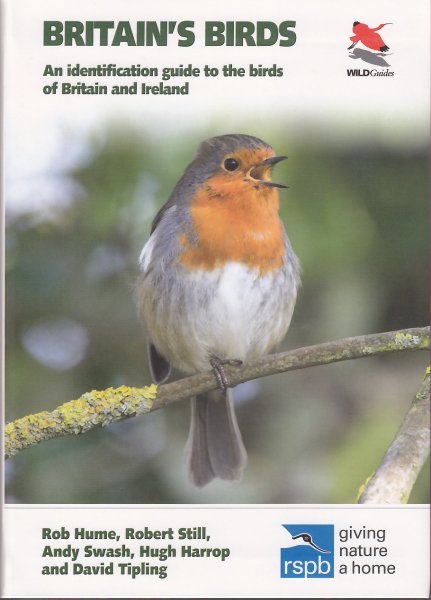
Publisher: Princeton University Press, Princeton and Oxford
Publication Year: 2016
Binding: 1
Page Count: 528
ISBN Number: 9780691158891
Price: £19.95
Britain's Birds: An Identification Guide to the Birds of Britain and Ireland
Yet another field guide to add to the pile, so how does this one stack up? Despite the impression given by the Robin on the front cover, and by the low price, this is a serious and comprehensive coverage of the birds of Britain and Ireland (and I suspect the title of the book may rankle with Irish birders). There are some species/subspecies here that don’t feature in most similar guides: anyone for Cabot’s Tern or Moltoni’s Warbler?
Photo-based guides have been improving over the years and the quality of the photos in this one is very high, as you’d expect from the expert team behind it (although there do appear to be a small number of errors in the photos, perhaps inevitable given the number of images?). Whether it’s better to have a guide based on photos or paintings is now really a matter of personal preference (ideally, have both!).
The text accompanying the photos seems well balanced; short and to the point. A novel feature is the inclusion of lots of information about conservation status for each species. It’s perhaps questionable how useful this is in a field guide (and such status measures are subject to regular revision), but some readers may find it useful. I personally felt it made the page layout a little busy.
Distribution maps can be difficult things to get right in field guides, and this guide does fall down a little in this respect. A number are incomplete (e.g. Marsh Harrier, Red Kite, Nuthatch, etc.) and some are misleading (Corn Bunting being particularly odd). These problems are a little disappointing given the ready availability of Bird Atlas 2007-11 maps. Similarly, population estimates are also given for each species, which can provide really useful context for beginners to judge the relative likelihood of different species. However, the means of derivation of these estimates is unclear and seems a little inconsistent; whilst many are based on recent published estimates, some appear out of date (Collared Dove, Grey Partridge, etc.) and others are clearly erroneous (Sandwich Tern, Gadwall). Wood Sandpiper is not noted as being a breeding species.
Despite the reservations above (which can hopefully be rectified in future editions), this is a significant new field guide, and birders are unlikely to be disappointed; everyone will learn something from this book.
Book reviewed by Andy Musgrove





Share this page